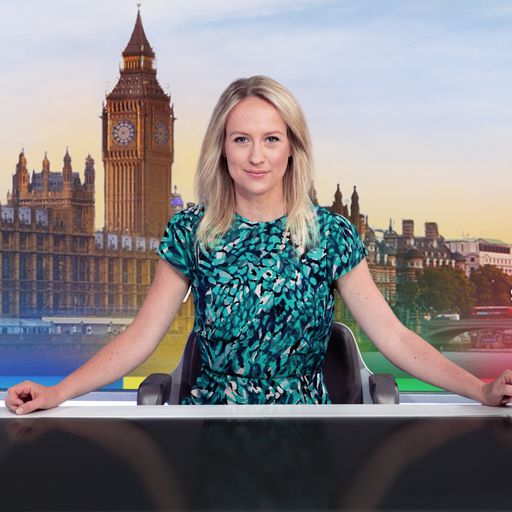Sam Coates: How boundary changes make Keir Starmer's job even harder - and what he needs to become PM
Famous election night names like Sedgefield and South Thanet will disappear when voters head to the polls this year - and the changes are set to make Sir Keir Starmer's already difficult job even harder.
Wednesday 22 May 2024 17:37, UK
In December 2019, when Boris Johnson won the election with an 80-seat majority, the electoral map was dominated by Tory blue in England and Wales and SNP yellow in Scotland.
But since then, this map - which shapes our democracy has been redrawn.
At the next election, a boundary review comes into force which means all but 77 seats have changed in the first overhaul since 2010.
The reason? To try to ensure everyone's votes are more or less equal. The various Boundary Commissions for each nation were required to redraw the boundaries of each seat as close to the average of 73,392 electors as possible.
That means more seats in England, but less in Scotland and Wales. Famous election night names like Sedgefield and South Thanet disappear.
Read more about the general election:
What happens now an election has been called?
Find your new constituency and how it's changed
How boundary changes make Starmer's job harder
The MPs who are standing down
But the real difference - politically - is what it means.
While the 2019 result on the boundaries in force at the time gave the Tories 365 seats, Labour 203, the SNP 48 and the Lib Dems 11, the same result under the new boundaries make a noticeable difference.
The Tories would therefore have seven more seats, Labour is down two and Liberal Democrats down three.
The majority, which in 2019 was 80, under new boundaries would become 94.
This is all based on calculations by Colin Rallings and Michael Thrasher for Sky News, the Press Association, BBC News and ITV News.
And it makes the job of Sir Keir Starmer even more difficult.
Below is Sky News' brand-new swingometer.
As previous masters of swing always say, a swingometer is just a bit of fun because it presumes everyone in the UK is acting in the same way, and makes lots of assumptions. But it's still a great tool for understanding what's going on.
The main one measures the swing from Tory to Labour - the higher it goes, the more seats in theory fall to Labour.
Starmer's route to Downing Street
The battle for Scotland
The battle between Labour and the Tories will be pivotal, but what's going on in Scotland will also determine our next prime minister.
Here we need to look at the potential swing just from the SNP to Labour - keeping all other parties the same.
These are the sorts of seats Labour needs to take from the Tories to get a majority. Maybe less if the SNP collapse in Scotland and the Lib Dems do well in the south of England.
But it's a lot. Can Sir Keir Starmer pull it off?
Be the first to get Breaking News
Install the Sky News app for free


Methodology
Estimates for nominal 2019 election results for the new boundaries have been compiled by Professors Colin Rallings and Michael Thrasher on behalf of Sky News, BBC News, ITV News and the Press Association.
A full methodology of the notional results estimates can be accessed here. The underlying data on all of the new vote estimates for each constituency can be downloaded as a spreadsheet.


